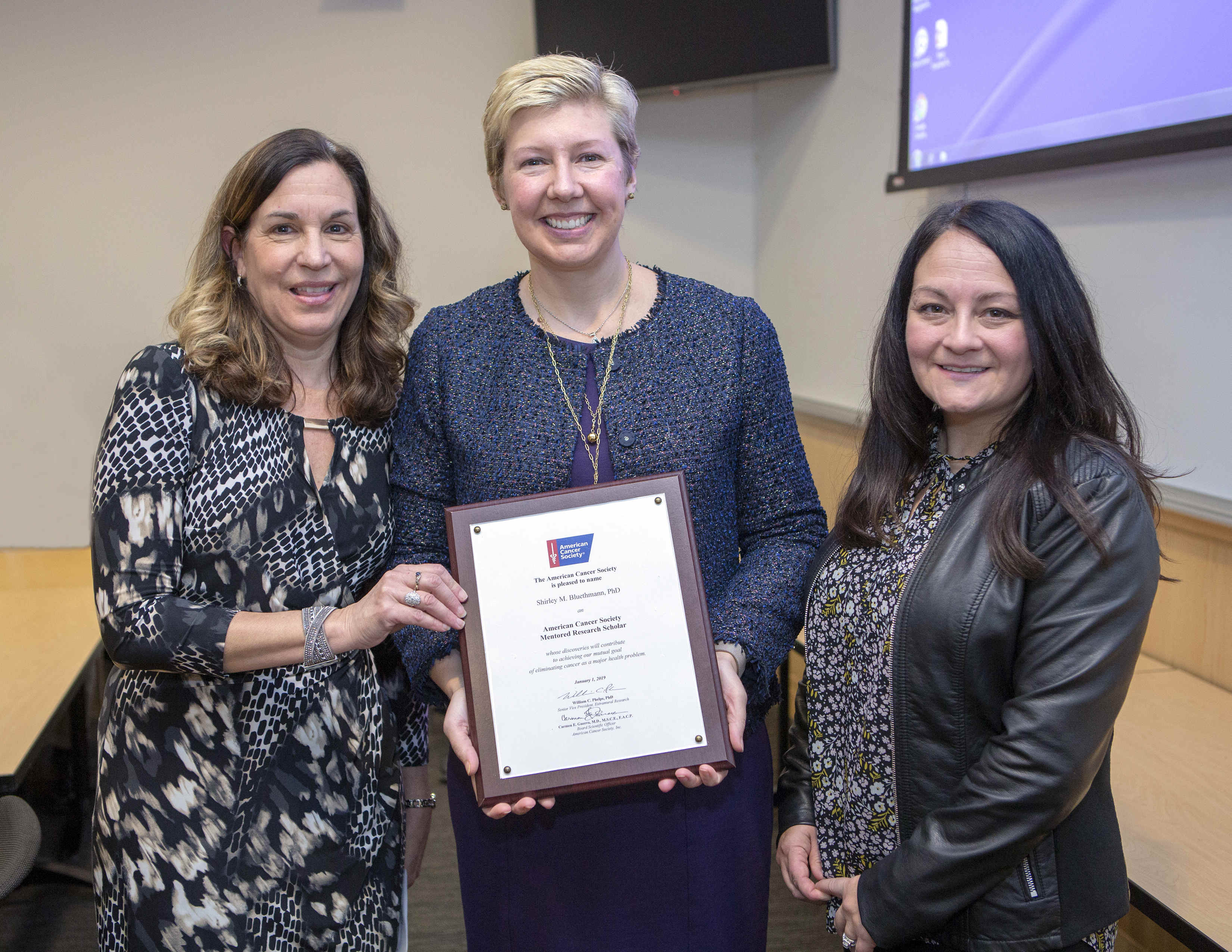Researcher to study exercise and medication adherence in older breast cancer survivors

The American Cancer Society has awarded $728,000 in funding to Penn State College of Medicine researcher Shirley Bluethmann to study whether exercise reduces joint pain and increases adherence to a type of lifesaving medication called aromatase inhibitors in women who have survived breast cancer. The five-year grant will support a clinical trial.
Bluethmann is an assistant professor in the Department of Public Health Sciences and principal investigator on the trial, named REJOIN for its focus on relieving joint pain. She is a behavioral scientist who received specialized training in cancer prevention and control as a postdoctoral fellow at the National Cancer Institute, and she has been working primarily with older breast cancer survivors for the past decade. Her team will recruit women over 65 years old in central Pennsylvania who have completed primary treatment for breast cancer and are now taking aromatase inhibitors.
A form of hormone “blocking” therapy, aromatase inhibitors are prescribed for the roughly 70 percent of postmenopausal breast cancer survivors who have cancers that are sensitive to the female hormones estrogen or progesterone. Aromatase inhibitors can keep cancer from returning, improving long-term survival, but they must be taken regularly for at least five years.
Sticking to the treatment can be challenging. Up to half of breast cancer survivors who receive a prescription for an aromatase inhibitor do not complete the therapy, often because of joint pain-related side effects. This is especially common in older women who may already have age-related bone or joint pain.
Unfortunately, few options are available for relieving joint pain from aromatase inhibitors. Pain killers may be contraindicated in older patients who are on multiple medications. Pain drugs may also cause their own side effects, including stomach upset or dizziness, which increases the risk of falling.
Breast cancer survivors who stop taking aromatase inhibitors early have a greater risk of cancer recurrence and death.
Exercise is an underutilized way to manage arthritis and other non-cancer-related joint pain, Bluethmann said. Recent research suggests that physical activity is also safe and effective for reducing joint pain in breast cancer survivors who are taking hormonal therapy. Yet, it’s rarely recommended as a long-term method of symptom relief.
In her year-long study, 76 participants will be randomly assigned to receive a self-management program, including education plus either exercise or standard care. The researchers will then assess whether the self-management group had less joint pain than the standard care group and if this was associated with better adherence to aromatase inhibitors.
The active intervention will span 16 weeks, with a mix of supervised and home-based strategies intended to promote an active lifestyle. All of the participants will be evaluated to monitor changes in their joint symptoms and medication adherence. Study participants will be recruited from Penn State Cancer Institute and Penn State Health Medical Group ― Andrews Patel Hematology/Oncology, an affiliated practice.
The researchers will work directly with survivors to strategize on using exercise to improve their joint conditions and other symptoms associated with cancer treatment, including depression, cognitive difficulties, fatigue, sleep disturbances and generalized physical dysfunction.
“With that training and education, the women will able to continue to apply those tools throughout their many years of cancer survivorship,” Bluethmann said. “It’s the gift that keeps on giving.”
Dr. Ellie Daniels, scientific director of cancer control and prevention research at the American Cancer Society, said that Bluethmann’s study is unique in using non-pharmaceutical methods to address chemotherapy-induced pain.
“Physical activity has the added benefit of counteracting changes in body composition—loss of muscle mass and increased fat—caused by cancer and reducing the risk of second cancers by maintaining a healthy weight,” Daniels said. “Additionally, during cancer treatment, survivors may experience social isolation. Getting women active in group exercise provides social support and helps them participate more in daily activities, improving their quality of life.”
If you're having trouble accessing this content, or would like it in another format, please email Penn State Health Marketing & Communications.
